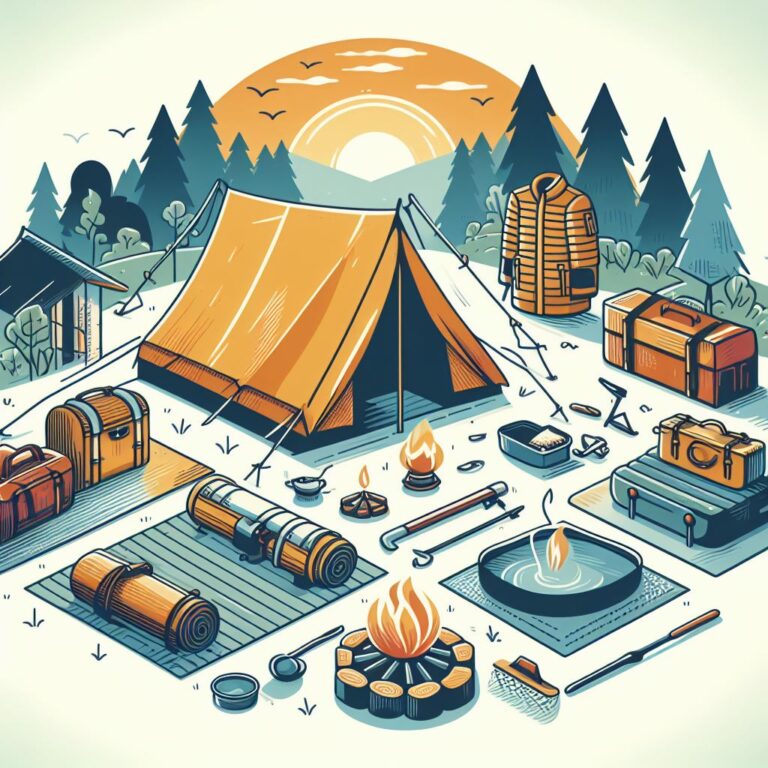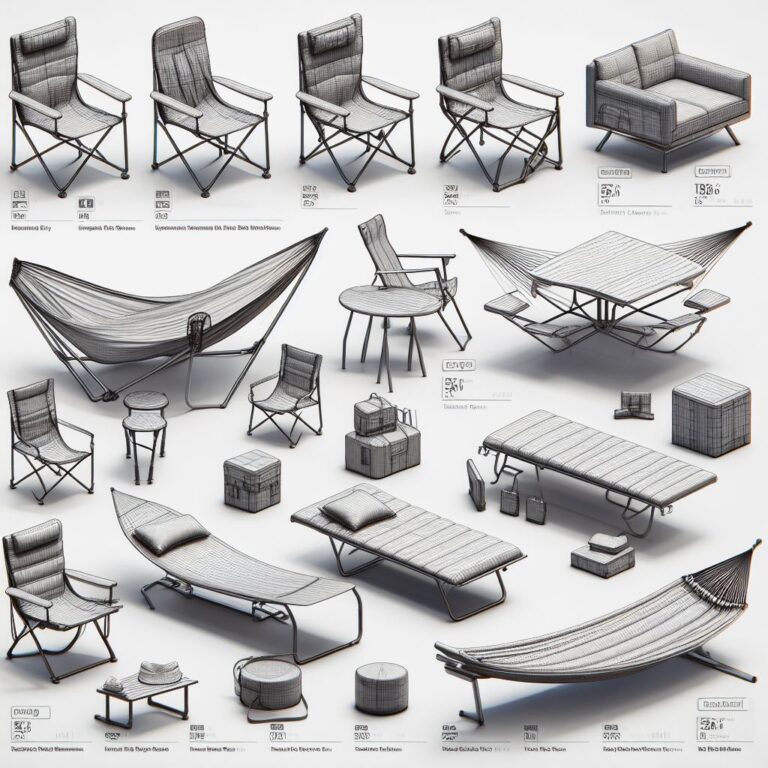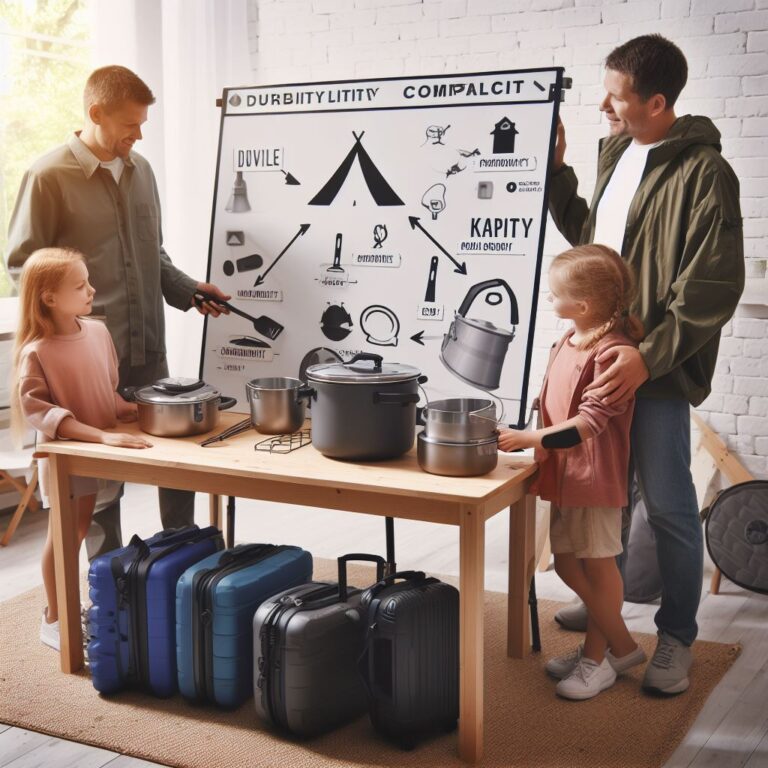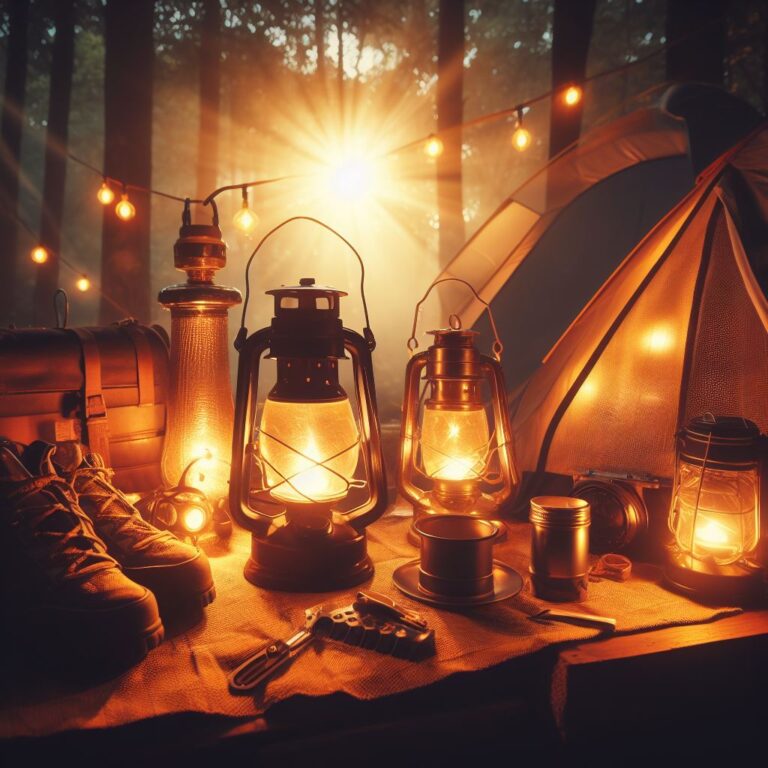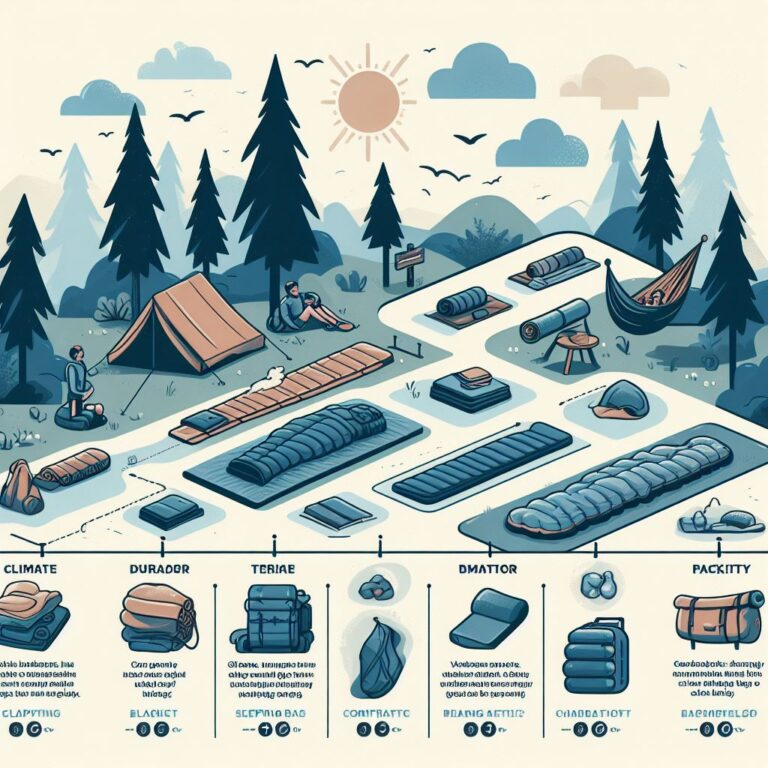Understanding Your Camping and Hiking Needs
Before embarking on any outdoor adventure, visualizing your specific needs is crucial. This requires an assessment of the nature of the trip, its duration, terrain, and weather conditions – these factors play an integral role in determining the resources necessary for the journey. Knowing the path to follow, the level of difficulty of the trails, anticipated weather changes, or the possibility of encountering wild animals will effectively inform your preparation process.
Consequently, aligning your needs appropriately equips you to deal with any unforeseen challenge, enhancing the safety and enjoyment of your camping or hiking expedition. Prioritize basic human needs: sleep, food, and protection from the elements. Consequently, the primary focus should be on acquiring high-quality camping and hiking gear, including tents, sleeping bags, cooking utensils, appropriate footwear, tools, and survival kits. With the right preparation and equipment, you can turn a potentially risky and challenging scenario into an enjoyable one.
Identifying Essential Camping and Hiking Gear
For the uninitiated, packing for a camping or hiking trip can seem like an overwhelming task. After all, being outside the comforts of home requires adequate preparation, with the understanding that every item of gear can make a difference in the wilderness. It’s always suggested to start with the basics. A dependable tent is first on the list – it provides shelter and protection during the night or in adverse weather conditions. Size, durability, and ease of setup are factors to consider while making a purchase.
Next, a good quality sleeping bag is a staple in any camping and hiking gear. This not only ensures a cosy and comfortable sleep but also keeps hypothermia at bay on cooler nights. Remember to consider the climate and temperature of the camping location when choosing the right sleeping bag. Also, no camping experience can be satisfactory without a reliable backpack. It needs to be spacious enough to accommodate all necessary items but not so heavy that it becomes a burden during long hikes. Choosing the right gear takes a little time and research, but it goes a long way in ensuring a comfortable and successful camping expedition.
Selecting the Right Tent for Your Adventure
When embarking on a camping or hiking adventure, the right tent can make a significant difference. It serves as your home away from home, offering a safe and comfortable shelter from outdoor elements such as rain, wind, cold, and insects. Several factors need to be carefully considered when selecting a tent, with the nature of your adventure being the primary driver. For example, a weekend getaway in a well-established campsite with family or friends may require a large, multi-room tent with standing room, while a solo multi-day hiking trip would demand a lightweight, easily portable, and uncomplicated single-person tent.
Also, tent selection should account for environmental factors such as weather patterns and anticipated temperatures of your chosen location. Tents designed for cold weather have thick walls and rainflies, with a narrow shape to resist strong gusts of wind. Conversely, warm-weather tents are crafted for ventilation and feature mesh panels to encourage air circulation while keeping out bugs. Seasonality is another essential factor in tent purchasing. Generally, three-season tents, built for spring, summer, and fall, are most common, while four-season tents, designed to withstand harsh winter conditions, are for those pushing the boundaries of their outdoor adventures.
Choosing the Perfect Sleeping Bag
When embarking on an outdoor adventure, comfort and safety are crucial. Therefore, the right sleeping bag becomes a key element in one’s camping and hiking gear. A superior sleeping bag not only ensures a good night’s sleep, it also protects from varying weather conditions. Furthermore, the material, size and weight of the sleeping bag are factors to carefully consider.
Temperature ratings on sleeping bags give you an indication of the lowest temperature at which the bag is designed to keep the average sleeper warm, otherwise known as its “lower limit”. It’s crucial to remember that everyone’s body temperature and comfort vary, so it’s advisable to opt for a sleeping bag with a lower limit that’s lower than the expected temperature. In terms of material, down-filled bags tend to be warmer, lighter and better compressible but are more expensive and lose insulation when wet compared to synthetic bags. Ultimately, the best sleeping bag is one that perfectly fits one’s needs and preferences.
The Importance of a Reliable Backpack
Venturing into the great outdoors for a camping or hiking trip involves carrying essential items needed for survival and comfort. Given this, one thing that can’t be overlooked is a reliable backpack. Your backpack serves as the primary storage for your outdoor essentials: food, water, clothing, camping tools, and other necessary gear. Its role is critical not just in fitting everything needed for the trip but also in how efficiently these items can be accessed when they’re needed.
A reliable backpack would be durable, waterproof, comfortable, and of a suitable size. Durability is a must as the backpack will be exposed to natural elements and rough terrains – you wouldn’t want it tearing apart in the middle of your trip. Waterproofing comes in handy when faced with rain or crossing bodies of water, ensuring your gear stays dry. Comfort is crucial for those long walks; the backpack should have a sturdy frame with padded shoulder and waist straps to evenly distribute the weight. Lastly, the size should be tailored to the expected length and conditions of your trek. Overloading or underloading both have their drawbacks, hence choosing the right size can make all the difference. A reliable backpack is an essential component in ensuring a successful and enjoyable outdoors adventure.
Picking Suitable Cooking and Eating Utensils
When camping and hiking, nutrition is crucial, but equally important are the tools used to prepare and consume the meals. Having the right cooking and eating utensils can elevate your outdoor experience by making mealtime easy, fun, and memorable. Outdoor cookware can range from minimalist setup to near kitchen-like sophistication, depending on your requirements and weight limitations. Similarly, multipurpose utensils that double as can or bottle openers can help reduce weight, providing a high utility value.
When choosing camping cookware, select lightweight, sturdy, and easy-to-clean materials like stainless steel or aluminum. For eating utensils, some backpackers prefer using sporks – hybrid spoon-fork tools, while others fancy full cutlery sets, including a knife, spoon, and fork. Remember, it’s all about balancing comfort, personal preference, weight, and space. Some also prefer packing a compact, portable camping stove, which significantly expands the range of possible meals but also adds to the weight. Taking the time to identify the right cooking and eating utensils can take your outdoor feasting experience to a whole new level.
The Role of Proper Footwear in Camping and Hiking
One should never underestimate the significance of well-fitted and sturdy footwear while planning a camping or hiking adventure. No matter the allure of untouched trails or the call of serene landscapes, the experiences can prove to be a grueling ordeal without the right gear, particularly shoes. Boots built exclusively for these purposes, which offer premium comfort and commendable grip, are specifically designed to safeguard the foot from intense strain, sprain, or injuries that the unpredictable and challenging terrains often entail. The shoes not only do an excellent job protecting the feet from external elements but also pave the way for a truly enjoyable and memorable journey on foot.
Selecting the perfect pair of camping or hiking shoes involves factors more than just comfort and fit. The components such as material, water-resistance capacity, breathability, durability, and the design of the outsole too play a crucial role in determining their appropriateness. Depending on the weather and terrain, one may need to opt for boots that are waterproof or breathable; sturdy but lightweight; and offer excellent traction for muddy, slippery, or rocky trails. Proper footwear, in essence, forms a pivotal part of the camping and hiking gear, ensuring optimal performance and tripper’s safety amidst nature’s unpredictabilities and challenges.
Navigating the World of Camping Tools
When embarking on a camping or hiking adventure, it’s important to have the right tools at your disposal. A tool’s utility, durability, and portability are some of the aspects one should consider before making a purchase. From simple multi-tools that offer everything you might need in one compact package, to specialized gear for specific tasks, the options are aplenty. Familiarizing yourself with their unique features and functionalities can significantly enhance your outdoor experience.
Creative innovations and technological advancements have significantly expanded the landscape of modern camping tools. Compact solar chargers, portable water purifiers, and GPS devices are just some examples of the high-tech gear available for outdoor enthusiasts. Despite this, fundamental tools such as a reliable campfire starter, a sturdy hammer for securing tent pegs, or a sharp knife remain indispensable. Striking a balance between traditional equipment and advanced gadgets can be the key to a successful and enjoyable adventure.
Survival Kits: Preparing for the Unexpected
When heading into the wilderness, a survival kit can mean the difference between a minor inconvenience and a dangerous situation. Survival kits, packed with care and consideration for the unpredictability of outdoor adventures, can provide peace of mind and potentially life-saving support. Essential items, such as a multi-tool, emergency blanket, whistle, firestarters, and first-aid supplies should always be part of your kit. Also, one must not forget to include a detailed map of the area and a compass, as technology could falter in remote or harsh environments.
Regarding sustenance, non-perishable, nutrient-dense foods are crucial to pack along with a durable water purification system that can filter out bacteria and protozoa. It’s also wise to include fishing line and a small assortment of hooks, especially for hikers heading into areas with access to rivers and lakes. As with all aspects of camping and hiking, survival kits should be catered to the individual’s needs and the specific demands of the adventure at hand.
Maintaining and Storing Your Camping and Hiking Gear Properly
Proper maintenance of your camping and hiking gear is pivotal in extending its lifespan, and several measures can help achieve this. Ideally, all components should be cleaned thoroughly after each use to remove natural debris and prevent bacteria growth, especially in cooking and eating utensils. It is equally essential to inspect equipment for any sign of wear and tear, undertaking repairs or replacements as necessary. This comprehensive routine surpasses physical cleaning; it involves operational checks for items like flashlights, stoves, and navigation systems, ensuring your gear is always ready for the next adventure.
Storing your equipment properly, meanwhile, safeguards against premature damage and keeps it in optimal working condition. Always store gear in a cool, dry place where it’s safe from harsh weather elements and rodents. Hanging items like backpacks and sleeping bags can prevent creases and mildew. Similarly, tents should be stored loosely packed, and not too tightly, to maintain their shape and waterproof qualities. Be sure to remove batteries from equipment to prevent corrosion during storage. By respecting these practices, you are investing in the longevity of your camping and hiking gear.
What should I consider when understanding my camping and hiking needs?
When understanding your camping and hiking needs, consider factors like the duration of your trip, the weather conditions, the terrain you will be encountering, and your personal comfort and safety needs.
How can I identify essential camping and hiking gear?
Essential camping and hiking gear generally includes a tent, sleeping bag, backpack, cooking and eating utensils, proper footwear, camping tools, and a survival kit. Other optional items may depend on your specific needs and the nature of your trip.
What factors should I consider when selecting the right tent?
When selecting a tent, consider the size that you need, the weather resistance, the ease of assembly, and the weight of the tent, especially if you will be carrying it for long distances.
How do I choose the perfect sleeping bag?
The perfect sleeping bag depends on the expected weather conditions and your personal comfort preferences. Consider the temperature rating, insulation type, shape, and size of the sleeping bag.
What makes a good, reliable backpack for camping and hiking?
A good backpack should be durable, comfortable to wear, have enough capacity for all your gear, and have appropriate compartments for organization. Waterproof or water-resistant features can also be beneficial.
How do I pick suitable cooking and eating utensils for camping?
You should choose lightweight, durable, and easy-to-clean cooking and eating utensils. Consider items such as a portable stove, pots and pans, cutlery, plates, mugs, and a cooler if necessary.
Why is proper footwear important in camping and hiking?
Proper footwear is important to protect your feet from harsh terrain and weather conditions. It also provides support and reduces the risk of injuries during long walks and hikes.
What tools should I include in my camping kit?
Useful camping tools might include a multi-tool, knife, flashlight, compass, fire starter, ropes, and a lightweight, portable shovel.
What should I include in my survival kit for camping?
A survival kit should include items like a first-aid kit, emergency blanket, whistle, multi-tool, water purification tablets, and emergency food supplies.
How can I properly maintain and store my camping and hiking gear?
After every trip, clean all your gear thoroughly before storing. Ensure everything is dry to prevent mildew. Store gear in a cool, dry place, and pack lightly to avoid damaging your equipment. Regularly check and repair any damage to ensure your gear is always ready for your next adventure.
- Floating Stone Lake Recreation Area – AB - March 14, 2024
- Katherine’s Camping Corner – Athabasca, Alberta - March 14, 2024
- Prairie Peaks Campground – Hill Spring, Alberta - March 13, 2024

